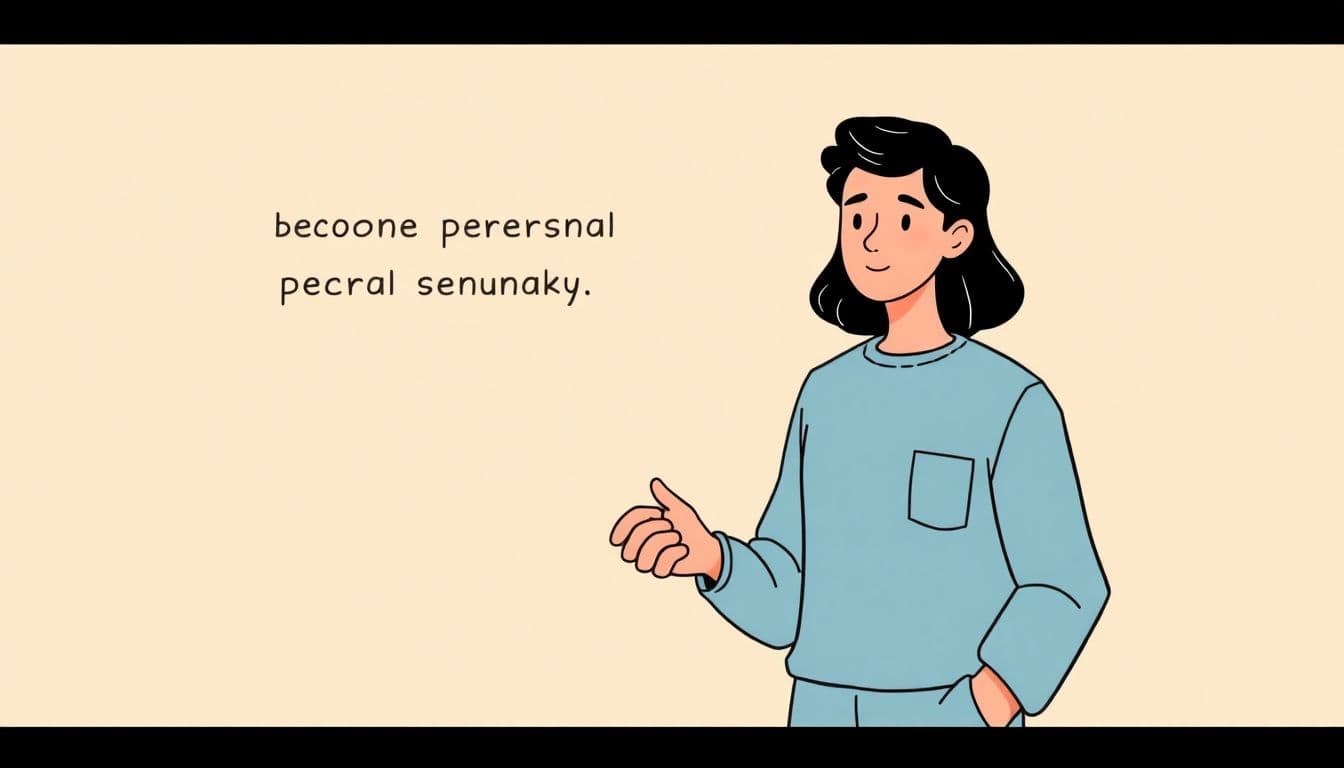Table of Contents
Coming up with fresh ideas for novels can feel tough—sometimes your imagination just takes an unexpected coffee break and leaves you staring at a blinking cursor. Trust me, every writer has been there.
But here’s the good news: the right writing prompts can spark your imagination, build intriguing characters, and give you ideas that keep your story moving. Stick around, and you’ll learn exactly how to choose, adapt, and turn writing prompts into amazing novels readers can’t put down.
Ready to get your creativity rolling? Let’s jump right in.
Key Takeaways
- Pick prompts matching your genre—like suspenseful prompts for thrillers or relationship-focused prompts for romances—to get plot ideas flowing.
- Use prompts about characters’ secrets, decisions, or struggles to create believable personalities readers connect with.
- Write conversations first as dialogues before adding descriptions; this helps make character interactions feel natural.
- If you’re stuck, choose fun or random prompts to get your creativity warmed up.
- Expand a short idea by listing main characters, interesting conflicts, and surprising twists.
- Keep having fun by trying new kinds of prompts regularly to refresh your motivation and storytelling skills.

Step 1: Choose a Novel Writing Prompt That Fits Your Genre
Writing prompts for novels are creative sparks designed to help authors overcome writer’s block and develop plot ideas, characters, or settings.
To make the most out of prompts, pick one that’s aligned with the genre you’re writing. Mystery and thriller books, for example, make up around 17–20% of U.S. adult fiction sales, so if that’s your jam, you might choose something suspenseful or crime-related. Maybe consider a prompt like, “A detective discovers that the key witness to their most crucial case is the person they’re investigating.”
If you’re into something lighter like romance or “romantasy”, choose prompts that dive into romantic tension or creative magical worlds. Genre-focused bookstores are popping up everywhere thanks to growing sales in these areas, so you’re in good company.
- Public domain-inspired prompts: Take old classics and twist them into something fresh. Example: Rewrite “Beauty and the Beast” as a paranormal mystery where the Beast is a werewolf wrongly accused of a crime.
- Cross-genre twists: Blend two distinctive genres to produce compelling stories. Something like a sci-fi romance where two rival scientists from different planets fall for each other despite their societies being at war.
You can find lots of seasonal or themed novel starters to get your ideas rolling—for example these fun winter writing prompts can spark a cozy or chilling atmosphere if chosen thoughtfully.
Step 2: Develop Characters Using Prompts Focused on People
Characters make or break stories—plain and simple. Using character-specific prompts helps you flesh out personalities, motivations, and internal conflicts. A good trick is to write a short scene or dialogue based on these prompts to reveal your characters’ emotions, flaws, or desires in a natural way.
Scribble out responses to questions like, “What’s the one secret your character would never tell anyone?” or “If your protagonist won a lottery jackpot, what’s the first irresponsible thing they’d buy?” These fun exercises not only entertain you but provide deeper insight into who your characters really are.
You can also experiment with realistic fiction prompts designed to create believable and relatable characters. Prompts such as “A single dad struggles with his kid’s teenage rebellion while launching a new business,” help ground your story in authentic human experiences.
Step 3: Build Your Plot With Story-Based Writing Prompts
No matter how cool your characters are, a gripping plot is what keeps readers flipping pages. Story-based prompts offer well-structured scenarios or challenges you can weave into your plot arcs. For instance, if you’re writing a thriller, try something like, “Someone receives a letter postmarked 10 years into the future, accurately predicting troubling events.”
To avoid predictable plots, mix things up creatively. Consider combining genres or introducing unique plot elements. For instance, you can use a dystopian plot generator to inspire an original narrative set in a troubling future scenario, or take inspiration from popular current trends appearing in direct-to-consumer platforms like Patreon or Substack, which authors increasingly use to engage fans with serialized or experimental content.
And remember, not every prompt has to be complex—sometimes simple is best. “Your character accidentally swaps phones with a stranger, discovering chilling texts on their device,” creates immediate tension without extensive explanation upfront.

Step 4: Use Relationship and Dialogue Prompts to Create Engaging Conversations
Relationships are central to almost every great story, and the conversations your characters have can be the highlight of your book if done right.
Start by using relationship-focused prompts to explore the dynamics between characters.
Ask yourself, “What uncomfortable truth does one character discover about the other?” or “How does a normally reserved character express love or friendship?”
Then turn those scenarios into compelling dialogue scenes that move your plot forward and show what’s at stake.
One smart approach is to try writing a conversation-only draft of certain chapters or scenes, just like a script, to nail down believable dialogue patterns before adding descriptions.
This approach helps you sharpen character voices and keeps dialogue sounding natural, rather than forced or exaggerated.
Check out visual media—like movies and TV shows in your genre—to see how successful relationships and dialogues unfold realistically.
Step 5: Try Sci-Fi and Fantasy Writing Prompts for Creative Storytelling
Sci-fi and fantasy genres often offer the most creative flexibility for writers, because you can invent almost any reality you like.
But sometimes, too many possibilities can freeze you up.
That’s why genre-specific prompts are helpful, as they narrow the focus and guide your imagination.
Consider a sci-fi prompt like, “Aliens arrive on Earth—not to conquer, but to trade humanity their advanced tech in exchange for stories.”
Or try fantasy prompts that tweak familiar elements, like, “Magic exists but each spell cast permanently erases one of your memories.”
Using specialized tools like a dystopian plot generator can also generate great starting points for unique worlds and scenarios.
Don’t be afraid to blend fantasy or sci-fi with other genres—like romance, mystery, or historical fiction—for extra originality.
Some of today’s top-selling book categories on Amazon are those that successfully mix genres together, giving readers something new to enjoy.
Step 6: Beat Writer’s Block With Helpful Writing Prompts
Feeling stuck? You’ve heard it before, but prompts truly do help break the dreaded writer’s block.
Instead of staring at the blinking cursor, pick an unrelated prompt to kickstart your writing muscles.
It doesn’t necessarily have to become part of your final draft; think of it like doing stretches before exercise.
Try funny writing prompts for kids to lighten the mood and stimulate creativity fast.
Or, pick alternative points of view, such as fourth-person narrative prompts, to shake things up and see your story from a fresh angle.
If you’re struggling to move forward, set a timer for 10 minutes and challenge yourself to write nonstop using a random prompt.
This mini-game approach relieves the pressure to be perfect and gets the words flowing again.
Step 7: Turn Short Prompts into Full Novel Ideas
Sometimes the hardest thing about writing prompts is transforming a single cool idea into a complex, full-length novel.
Here’s a straightforward strategy: start by brainstorming five different ways you could build or expand on the initial prompt.
Take your favorite short prompt and ask yourself deeper questions:
- Who are the central characters who could emerge from this situation?
- What conflicts naturally follow from this core idea?
- Where might unexpected twists show up?
- How could this initial scenario escalate or tie into bigger themes?
The beauty of short prompts is their versatility—your initial spark can transition into a romance plot, an action-packed thriller, or even become a foundation for how to write a dystopian story.
Trust your gut and pick a direction that excites you enough to sustain your interest through drafts and editing.
Step 8: Experiment With Different Types of Prompts to Keep Writing Fresh
If you stick only with one style of prompts, your writing process might start feeling repetitive.
Keep your ideas and enthusiasm high by experimenting with various prompts, even those outside your usual interests or comfort zones.
For instance, try seasonal themes—like these fall writing prompts—that can inspire cozy mysteries, chilling horrors, or heartfelt romances.
You might also explore experimental formats, such as prompts designed around present tense narration or unusual POV challenges.
You could even consider playful character writing prompts where a famous fictional hero lands in your favorite coffee shop, creating endless possibilities or funny moments.
Mix things around occasionally.
Not only does this keep the task of writing enjoyable, it can also uncover hidden strengths and fresh techniques you’ll wish you’d used earlier.
FAQs
Choose prompts clearly connected to your preferred genre; for romance, use relationship-based prompts, while suspense stories benefit from dramatic events or mystery scenarios. Selecting prompts aligned with your style helps build a cohesive narrative from the start.
Character-focused prompts mentioning backstories, flaws, goals, and personal motivations are ideal. Prompts that address moral dilemmas, everyday struggles, or personal histories can produce relatable, multi-dimensional characters audiences will strongly connect with.
Yes, short prompts can lead to novel-length projects. Expand them by adding backstory, fleshing out characters, and building intriguing conflicts and relationships. Brief ideas often grow naturally and become rich, engaging stories with careful development.
Select prompts unrelated to your current scene or genre to shift your mindset. Experiment with unusual character perspectives or unexpected scenarios, as these variations encourage refreshed creativity and effectively break through writing fatigue and creative barriers.



